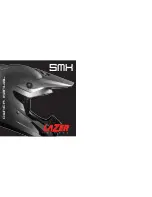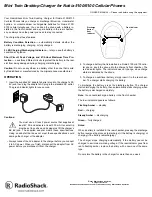
Page 15
509 Sharptown Road P.O. Box 345 Bridgeport, NJ 08014
Email: [email protected] Fax: 856-467-5511
Internet: http://caddycorp.com Phone: 856-467-4222
Care and Cleaning of Stainless Steel Equipment
Contrary to popular belief, stainless steels ARE susceptible to rusting and pitting.
Corrosion on metals is everywhere. It is recognized quickly on iron and steel as unsightly yellow/orange rust.
Such metals are called “active” because they actively corrode when their atoms combine with oxygen to form
rust.
Stainless steels are passive metals because they contain other metals, like chromium, nickel and manganese
that stabilize the atoms.
Chromium provides an invisible passive film that covers the steel’s surface acting as a shield against corrosion. As
long as the film is intact and not broken or contaminated, the metal is passive and stainless. If the passive film of
stainless steel has been broken, equipment starts to corrode. At its end, it rusts.
The Enemies of Stainless Steel
There are three basic things which can break down stainless steel’s passivity layer and allow corrosion to occur.
1.
Mechanical Abrasion
- Steel pads, wire brushes and scrapers are prime examples of things that will
scratch a steel surface.
2.
Water and Deposits
- Water has varying degrees of hardness. Depending on the area you live in, you may
have hard or soft water. Hard water may leave spots, and when heated, leave deposits that will break down
the passive layer and rust stainless steel. Other deposits from food preparation and service must be
properly removed.
3.
Chlorides
- Chlorides are found nearly everywhere. They are in water, food and table salt. Some of the
worst chloride perpetrators come from household and industrial cleaners.
Here are a few steps that can help prevent stainless steel rust and pitting.
1.
Use the proper tools.
When cleaning stainless steel products, use non-abrasive tools. Soft cloths and plastic scouring pads will
not harm steel’s passive layer. Stainless steel pads also can be used but the scrubbing motion
must
be in
the direction of the manufacturers’ polishing marks.
2.
Clean with the polish lines
Some stainless steel comes with visible polishing lines or “grain”. When visible lines are present,
always scrub in a motion parallel to the lines. When the grain cannot be seen, play it safe and use a
soft cloth or plastic scouring pad.
3.
Use alkaline, alkaline chlorinated or non-chloride containing cleaners.
While many traditional cleaners are loaded with chlorides, the industry is providing an ever-increasing
choice of non-chloride cleaners. If you are not sure of chloride content in the cleaner used, contact your
cleaner supplier. If your present cleaner contains chlorides, ask your supplier if they have an alternative.
Avoid cleaners containing quaternary salts; they can attack stainless steel and cause pitting and rusting.
4.
Treat your water.
Though this is not always practical, softening hard water can do much to reduce deposits. There are certain filters
that can be installed to remove distasteful and corrosive elements. To insure proper water treatment, call a
treatment specialist.




































